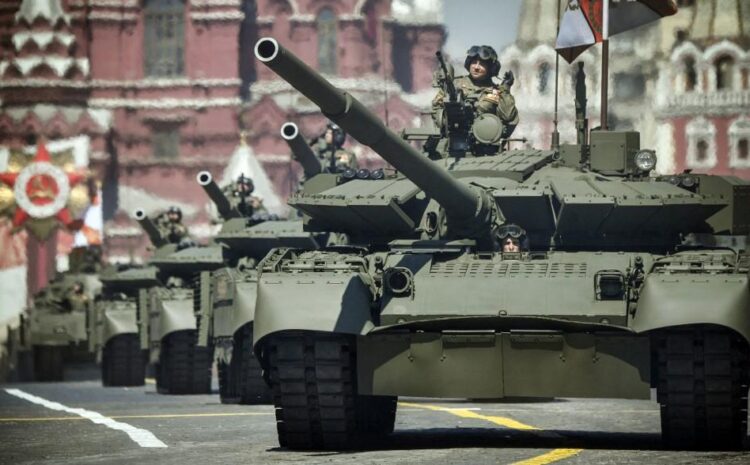The Russians are Coming (Maybe)! Risk Mitigation Tips for Potential U.S. Economic Sanctions and Export Controls

Tune into your favorite news network these days and there’s a lot of speculation on how the United States and its allies (mainly the European Union and the United Kingdom) may respond to a Russian military invasion of Ukraine, especially with coordinated economic sanctions and export controls. However, it is still possible to sift through all the buzz in order to make out the potential extent and scope of new sanctions and export control measures the U.S. has in mind, which include:
- A severe and immediate use of sanctions and export controls to constrict Russia’s ability to engage in global commerce, and its ability to develop technology for industrial sectors that it cares about most, as opposed to the gradual approach undertaken since 2014 in response to Russia’s annexation of Crimea.
- Specific target categories for U.S. sanctions and the potential breadth of such sanctions.
- The extent that export controls may be used to restrict Russia’s access to U.S.-origin technology, and the types of technologies that may be targeted.
This universe of possibility is outlined in more detail below, along with relevant guidance for businesses’ trade compliance professionals in assessing and mitigating potential operational risks.
Potential Economic Sanctions Measures Against Russia
The sanctions threatened against Russia by President Biden parallel many of those contemplated by Senate Bill S.3488 (the “Defending Ukraine Sovereignty Act of 2022”), which has a great deal of bipartisan support in both houses of Congress. The President has immense unilateral powers to impose his own sanctions measures under the existing International Emergency Economic Powers Act (“IEEPA”)—the foundational law of most existing U.S. sanctions programs—but if Bill S.3488 were enacted into law it would instruct the President to quickly sanction specified targets pursuant to his IEEPA authority. The possible targets from the Biden Administration and/or Bill S.3488 include:
- Russian government officials, including as high up as Putin himself;
- Putin’s inner circle (i.e. relatives and Russian oligarchs). U.S. officials have reportedly selected potential targets from a classified list of senior political figures and oligarchs previously sent to Congress pursuant to the Countering America’s Adversaries Through Sanctions Act (“CAATSA”);
- Russia’s largest financial institutions (e.g. Gazprombank, Sberbank, VTB);
- Russian-state owned enterprises;
- Russian extractive industries, including oil and gas, coal, minerals, and potentially other critical industrial sectors to be identified at the discretion of the President;
- Nord Stream 2 pipeline (to deliver gas from Russia to Germany), including individuals and entities involved in its planning, construction, or operation. However, this has been a contentious point in draft negotiations for Senate Bill S.3488, especially since Germany is heavily reliant on Russian natural gas;
- Transactions involving Russian sovereign debt. Note that U.S. banks are currently prohibited pursuant to the CBW Act directives issued under Executive orders 13883 and 14024 from participating in the primary market for non-ruble and ruble denominated bonds issued by the Russian Government, and from lending non-ruble and ruble denominated funds to the Russian Government (except its state-owned enterprises). Senate Bill S.3488 contemplates going as far as prohibiting all transactions by U.S. persons involving Russian sovereign debt; and
- Cutting off Russian banks’ ability to access the Society for Worldwide Interbank Financial Telecommunication (“SWIFT”), or similar institutions that provide financial messaging services enabling banks worldwide to settle fund transfers between them, by essentially threatening sanctions against such institutions. If this were to occur, Russia would find itself very isolated from the global financial system. However, this option is less likely since it may cause significant collateral damage to that system.
Any sanctions against the foregoing targets can be as extensive as the imposition of full blocking sanctions under IEEPA. In practice, this would mean that sanctioned persons (individuals and entities) would be identified on the U.S. Department of the Treasury’s Office of Foreign Assets Control’s (“OFAC”) Specially Designated Nationals and Blocked Persons (“SDN List”), and persons subject to U.S. jurisdiction would be prohibited from engaging in virtually any transactions or dealings with them, including any entities owned 50-percent or more in the aggregate by such sanctioned persons (OFAC’s “50 Percent Rule”), unless authorized by OFAC.
Under his IEEPA authority the President can also implement less prohibitive sanctions against any of the above targets. Such “restrictive” sanctions may be similar to OFAC’s existing directives issued under E.O. 13662, which only prohibit persons subject to U.S. jurisdiction from engaging in certain types of debt and equity transactions with persons identified in various Russian industrial sectors, and certain Russian energy projects (also subject to OFAC’s 50 Percent Rule). Several major Russian banks and oil companies are already subject to the restrictions of such directives (e.g. Gazprombank, Sberbank, VTB Bank, Rosneft), so any further sanctions against them would likely be a full blocking.
Potential Export Controls Measures Targeting Russia
The Biden Administration has also threatened Russia with “incredibly potent” export controls measures intended to deprive Russia of technological inputs considered essential to its strategic ambitions. To do so, the U.S. Department of Commerce’s Bureau of Industry and Security’s (“BIS”) could reportedly go as far as amending the Export Administration Regulations (“EAR”) to apply its foreign direct product rule (“FDPR”), as it previously did with Huawei (depriving it of essential semiconductors). Application of the FDPR to Russia would attempt to restrict its access to any items manufactured outside the U.S. that are produced using controlled U.S. technology or software, and necessary for importing or self-producing advanced technologies related to the following industrial sectors: telecom, aerospace, defense, maritime, quantum computing, robotics, artificial intelligence, and any others that enable Russia to diversify its economy beyond oil and gas.
Proactive Compliance Considerations
Although the prospects and extent of any new sanctions and export controls measures against Russia remain uncertain, U.S. and non-U.S. businesses with an international footprint should nonetheless assess their respective risk profiles. The primary reason for being proactive on this front is because any implementation of these measures is going to be swift and severe should Russia cross the red line, and companies would have to act quickly. Even if this political crisis de-escalates, the U.S. may still follow through on some of these sanctions and export control actions to reprimand Russia.
In assessing risks first consider any direct or indirect touchpoints your business, including its subsidiaries and affiliates, have with Russia by asking relevant questions such as:
- Do any business operations involve Russian financial institutions? Dealings in general banking services, payment processing, financing, letters of credit, bonds, or equity instruments could potentially be impacted.
- Do any business operations involve entities with an ownership or control interest held by Russian individuals reported to be part of Putin’s inner circle or senior government officials?
- Do any business operations involve dealings with Russian state-owned enterprises, including any entities in which they have an ownership or control interest?
- Do any business operations involve Russian extractive industries, within or outside Russian territory, including the oil and gas, coal, and any other mineral sectors?
- Do business operations involve participation in any bonds issued by, or lending activities to, the Russian Government (including state-owned enterprises)?
- Do business operations involve manufacturing, selling, exporting, reexporting, or transferring to/within Russia any items, especially those categories of items (commodities, software, or technology) that the U.S. Government has expressed interest in restricting Russia’s access to (i.e. anything that could be considered advanced technology)? Even if any such items are foreign-made, are they incorporated with any U.S.-origin items during their manufacture or assembly?
Businesses should identify and undertake (pre-sanctions and export controls) relevant risk mitigation measures where potential risks are found to be present, to ensure seamless compliance if applicable sanctions and export controls are implemented. To that end, here are some key considerations:
- Will the businesses’ sanctions and/or export controls policies and procedures need to be revised to interdict any potential dealings involving Russia, subject to escalation, review, and approval by its compliance and/or legal units? Will additional monitoring protocols be established for any business that is permitted to take-place?
- Will any third-party screening tools used by the business need to be re-calibrated to appropriately interdict transactions involving Russia? Are any such tools capable of identifying ultimate beneficial ownership information for purposes of the 50 Percent Rule?
- Where any existing business relationships may be impacted, review underlying agreements to identify relevant contractual rights (e.g. voidability) and payment terms. Note that compliance units should also be on the lookout for applicable wind-down general license authorization to be issued by OFAC (considering precedent from various existing OFAC sanctions programs), and appropriately monitor their use to ensure strict compliance with their terms.
- In the event BIS amends the EAR to further restrict Russia’s access to items the business and/or its third-party affiliates trade in, including potential application of the FDPR, are there appropriate internal controls in place to ensure applicable items are appropriately classified against the EAR and its Commerce Control List (“CCL”), and managed for their export, reexport, and transfer (in-country) involving Russia or Russian nationals?
- Does the business need to revise its end-user declaration forms to help prevent diversion to unauthorized end-users or end-uses in Russia?
The author of this blog post is Kian Meshkat, an attorney specializing in U.S. economic sanctions and export control matters. If you have any questions please contact him at 202-440-2591 or meshkat@falawpc.com.


